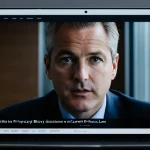Key Principles of Journalistic Integrity
A foundation of journalism ethics rests on several core tenets: truthfulness, accuracy, fairness, and impartiality. Each principle serves to uphold the commitment of media professionals to present information that is reliable and balanced. Integrity in journalism demands a steadfast dedication to these values, ensuring that news reporting does not mislead or favor any particular interest.
Public trust is intricately linked to ethical standards in media. When audiences perceive fairness and honesty, they are more likely to regard news outlets as credible sources. Conversely, lapses in ethics can erode confidence and diminish the media’s role as a watchdog for society. This relationship underscores why adherence to professional codes, such as the SPJ Code of Ethics, is crucial. These guidelines provide clear instructions to journalists on how to navigate ethical dilemmas, reinforcing the importance of truth and minimizing harm.
Additional reading : What are the current debates on UK privacy laws?
By prioritizing these principles, journalists validate their responsibility to inform the public accurately and respectfully. Commitment to integrity in journalism builds a foundation that supports both the content quality and the public’s right to be well-informed.
Fact-Checking and Source Verification
Fact-checking in journalism is essential to ensure accuracy in news reporting. Before publishing, journalists engage in rigorous methods to verify information. This process includes cross-referencing data with multiple sources and confirming details through primary sources like interviews or official documents. Primary sources are generally more reliable than secondary ones, which may contain interpretations or biases.
Also to read : What are the economic impacts of UK tourism in 2024?
Verifying sources involves scrutinizing their credibility and expertise. Trusted sources are transparent about their identity and have a track record of reliability. When journalists encounter conflicting information, they take extra steps to resolve discrepancies, maintaining a high standard in journalism ethics. Inaccuracies can harm both the outlet’s reputation and public trust.
Addressing misinformation promptly is equally critical. Ethical standards in media dictate that corrections and clarifications are issued transparently if errors occur. This commitment to fact-checking and source verification strengthens integrity in journalism by preventing the spread of false information and reinforcing accountability. Practicing meticulous verification underscores the media’s role to provide the public with trustworthy and accurate news.
Transparency and Accountability in Reporting
Maintaining journalistic transparency is crucial for fostering trust and credibility. This involves openly disclosing sources, the methods used to gather information, and any potential conflicts of interest. Transparency allows audiences to understand how the news was produced and evaluate its reliability, reinforcing ethical reporting practices.
When errors arise, accountability in media requires prompt corrections, retractions, or public apologies. Such actions not only rectify misinformation but also demonstrate a commitment to integrity. Transparent corrections help preserve the public’s trust by showing that media organizations hold themselves responsible for accuracy.
Organizational mechanisms, such as editorial oversight and ombudsmen, further support accountability. These structures ensure that ethical standards are upheld consistently and provide avenues for addressing grievances or ethical concerns. Together, these practices strengthen the profession’s commitment to ethical reporting practices by promoting openness and responsibility in journalism.
Managing Conflicts of Interest
Conflicts of interest in journalism can undermine journalistic independence and compromise the quality of reporting. Recognizing these conflicts is essential to maintain impartial reporting. Such conflicts may arise from personal relationships, financial interests, or affiliations that could bias coverage. Journalists must disclose these potential conflicts transparently or recuse themselves from stories where neutrality is at risk.
Separation between news and opinion is a critical strategy to uphold independence. Clearly distinguishing editorial content from factual reporting helps prevent confusion and maintains the audience’s trust. News outlets implement policies that delineate these boundaries, reinforcing ethical standards in media.
Practical approaches include ethical training and internal oversight to detect and manage conflicts early. Organizations often require journalists to declare financial ties or external engagements regularly. These measures strengthen integrity in journalism by promoting transparency and protecting editorial freedom.
By actively managing conflicts of interest, journalists safeguard their credibility and uphold ethical reporting practices. This vigilance reassures the public that coverage is based on facts, not influenced by outside pressures or personal gain.
Real-World Examples and Applications
Exploring case studies in journalism ethics reveals how integrity in journalism operates in practice. For example, during the 2003 Iraq War, some outlets prioritized speed over accuracy, leading to misinformation that eroded public trust. This highlighted the vital role of ethical standards in media to balance urgency with fact verification. In contrast, instances where journalists issued prompt corrections for errors demonstrated a commitment to transparency, reinforcing credibility.
Another notable example is the investigative reporting by The Washington Post on the Watergate scandal, which exemplifies rigorous adherence to journalism ethics. The reporters maintained impartiality and thorough fact-checking, embodying ethical standards in media that upheld democracy and public accountability. These events underscore how upholding these principles can restore or damage trust.
Lessons from real-world situations emphasize practical steps: prioritizing accuracy over sensationalism, openly correcting mistakes, and vigilantly managing conflicts of interest. Implementing these best practices in action fosters trustworthy journalism and safeguards the profession’s reputation. Newsrooms adopting such approaches demonstrate that integrity in journalism is not merely theoretical but essential for societal well-being and informed citizenship.







